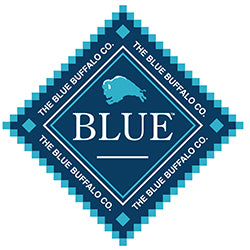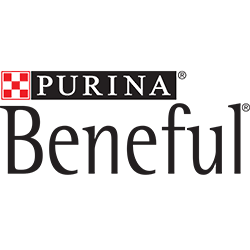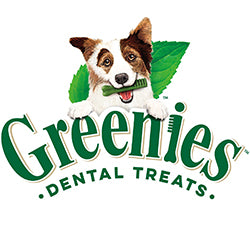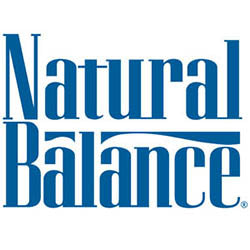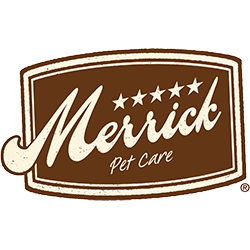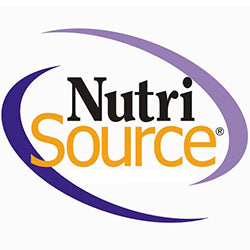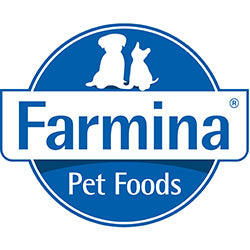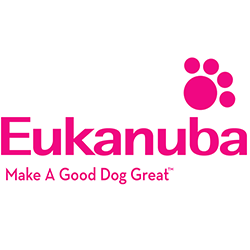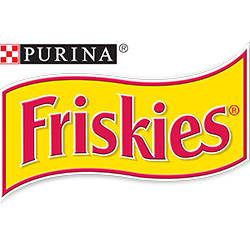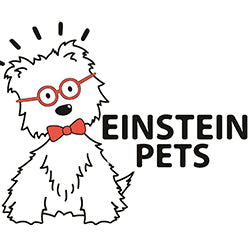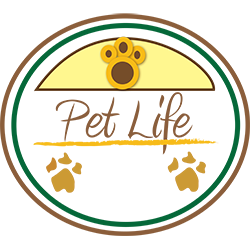
Dog Nutrition: Guide to A Balanced Diet for Your Dog in 2022
Your dog's diet and health are inextricable, meaning that a nutrient-rich diet is requisite to your dog's health. However, the ever-expanding dog feed range in the commercial dog feed industry can blur the line between healthy and trendy dog feeds.
So, how do you avoid getting caught up in the marketing fluff on commercial dog food packages? Most importantly, what are your dog’s daily dietary requirements and what types of food, and how often should you feed it to achieve the said requirements? If these questions linger in your mind, this guide has everything you need to know.
Essential Dog Nutrients
Dogs require nutrients to keep their immune system strong, facilitate body tissue repair, and meet their energy needs. Feeding your dog a low-nutrient diet can cause digestive issues, often leading to malnutrition. Malnutrition symptoms among dogs include emaciation, excessive dander loss, skin irritation, irritable bowel, and flatulence.
Regardless of where you source your dog’s food, it should contain the following nutrients; proteins, fats, vitamins, and minerals. Here’s a breakdown of each nutrient's role in your dog's health.
Protein
Proteins are a crucial component of a balanced diet due to their body-building role. Dogs need complete proteins containing all the nine essential amino acids. Moreover, dogs don’t store excess proteins in their bodies since the liver breaks down excess protein and expels it from the body as urine. As a result, dogs need a substantial daily protein to supply the necessary proteins for various body functions.
Proteins are essential in your dog’s muscle growth and repair, skin cell rejuvenation, and structural development that causes fur and claw growth. The enzymes, hormones, and antibodies are protein types that direct multiple body functions, including immune responses.
However, since not all proteins are equal, you want to get them from the right source. Animal protein like beef dry dog food infused with antibiotics from a reputable seller is a perfect choice.
Fats
Unlike human beings who rely on carbohydrates to meet their energy needs, dogs rely on fats as their primary energy source. Besides energy generation, fats also facilitate nutrient absorption and work alongside proteins to promote normal cell structure development and organ function.
Dogs fed on diets having inadequate fat develop unhealthy skin prone to skin irritation and infections and a dull-looking fur coat. Therefore, a fat-rich diet is essential, especially for working dogs and those that exercise regularly. Healthy plant oils like sesame seed oil, flaxseed oil, and olive oil are suitable substitutes for meat fats.
Vitamins
Vitamins are essential for your dog's metabolic process and help maintain overall health. Feeding your dog insufficient vitamins can lead to skin problems, eye problems, and excessive drooling, amongst other problems.
Dogs have a lower vitamin requirement than protein or fats, so you can consult your vet on the ideal vitamin amount to meet your dog's nutritional needs. Eggs and fish are good vitamin sources for dogs; however, vegetables like carrots, squash, Brussel sprouts, green beans, broccoli, and sweet potatoes are fantastic options.
Minerals
Minerals are also a must-have in a dog’s balanced diet. Dogs need a dose of calcium, phosphorus, magnesium, sodium, potassium, iron, copper, and zinc to enhance various body functions. Such functions include teeth and bone development, muscle signaling, and cell signaling.
Types Of Dog Food
Your dog can only receive and enjoy the above nutrients by consuming nutrient-dense dog feed. As a pet parent, you can select one or a combination of the following dog food options to meet your dog's nutritional needs.
Kibble/Dry Food
Kibble or dry dog food is popular among pet parents for its long shelf life and convenient serving when homemade dog food is an expensive and time-consuming option. Dog kibble is dry dog food made by blending multiple food types, including animal proteins, plant proteins, vegetables, fruits, and grains. Before being shaped into pellets, the dog feed mix undergoes extrusion to render the protein and fat.
However, the kibble varieties available in the market vary in quality. Therefore, you should always look for kibble products that meet the Association of American Feed Control Officials (AAFCO)’s nutrient density recommendations. The AAFCO recommends the minimum nutrient concentration per dry matter for animal feeds like kibble.
For instance, the organization recommends an 18% minimum protein concentration for regular dog feed and 22.5% for growing, gestating, and lactating dogs. It also suggests an 8.5% fat concentration minimum for the former and a 5.5% minimum for the latter.
When shopping for canine kibble, other helpful tips include checking the ingredients on kibble labels for actual protein names (beef, chicken, lamb) rather than byproduct meals. Dogs thrive on human food-grade meat cuts rather than disposable parts like tails and feet. The top two ingredients on the packaging should read animal proteins, although plant proteins can feature from the third listed ingredient.
The kibble's fat content also matters so you should look for healthy fat options like omega-3 and omega-6 fatty acids or plant fats. Finally, be wary of fillers like starch, wheat, and soybean that may seem healthy for humans yet serve no nutritional benefit in dog feed.
Canned/Wet Food
Canned or wet dog food is another dog food option available for pet owners. Unlike dry dog food, which has a 10% moisture content, wet food features a substantially higher water content at 75%, meaning it also aids in meeting your dog's hydration needs.
Canned foods also undergo less intensive processing than kibble; hence their nutrient content has higher bioavailability. Additionally, the high moisture content makes masticating and swallowing the food more pleasant for some dogs. Tikki Dog and Whole Earth Farm are among the popular canned dog food brands in the commercial food market.
But less processing means canned food goes bad faster and requires refrigeration after you open the can. Also, wet food is more expensive since its high water content means fewer nutrients packed per can and more food portions required to hit your dog's desired nutrient intake.
Some pet parents avoid feeding their fur babies canned food due to the popular belief that it causes tartar buildup leading to periodontal diseases. However, one expert-reviewed research paper on preventing periodontal diseases among dogs noted insufficient evidence to support this theory.
Semi-moist/Semi-dried Food
Semi-moist food is like a cross between kibble and wet food and features a moisture content of approximately 60%. The feed’s soft texture makes it easier for fur babies that are particular about food texture to handle.
Most dogs find such feeds tasty, including picky eaters, and enjoy a significant energy boost after indulging in such feeds. Semi-moist food is attractive to dogs because it contains higher sugar and salt content. It typically includes additives like artificial food colors and flavors that may harm your dog. Therefore, they work best as occasional dog treats and should not constitute your dog's regular meal plan.
Raw Feed
As the name suggests, raw feed refers to uncooked and unprocessed animal feeds. Also known as BARF (Bones and Raw Food) diet, its proponents argue that feeding dogs the type of food they ate pre-domestication improves their health.
Homemade Dog Food
Homemade dog feed is fantastic for dog parents who have the time and the ingredients to prepare it. It allows you to measure the nutrients listed above according to your dog’s specific life stage and condition.
You can also rest assured that the ingredients you use are food-grade, fresh and dog-friendly. However, avoid ingredients toxic to dogs such as chocolate, garlic, avocado, macadamia nuts, and cooked bones.
Dog Treats
Dog treats like Happy Howie's chews and Hip Bones dog biscuits are among the most delicious dog treats available in the market. However, you should only treat your dogs occasionally and not during meal times.
Indulging dogs often with treats can cause them to develop a sharp preference for such foods and become picky eaters. Besides being an occasional indulgence, dog treats are helpful puppy sleep training tools, making the puppies look forward to bedtime.

Factors Influencing Individual Dog Nutrient and Feed Quantity
Learning essential dog nutrients and the best dog feed sources for such nutrients. However, individual dogs differ dramatically in the food and nutrient quantity necessary to meet the nutrient requirements for their various life stages.
Below are the primary considerations when deciding how much of each essential nutrient to include in your dog's meal plan and how often you should feed your dog. You can consult your vet for further guidance.
Dog Breed
Despite dog nutritional needs cutting across all dog breeds, different dog breeds have varying body sizes and metabolic rates hence differences in their feeding demands. Consequently, small and large dog breeds have dietary differences to meet their varying metabolic rates and body size.
Surprisingly small dogs have a high metabolic rate, yet they have small stomachs, meaning that the food they ingest passes through the digestive tract pretty fast. The high metabolic rate means they have to eat a calorie-rich diet (high in simple carbohydrates) three to four times daily. Also, such dog breeds tend to be more energetic, and calorie-rich food is a viable energy source.
In contrast, large dog breeds have a lower metabolic rate and eat less food, coming down to 22.5 calories/pound in their adult lives than small breeds’ 40cal/pound. Moreover, they require a specialized diet to help prevent bone disease development, like arthritis.
A balanced diet with calcium and phosphorus for large breed puppies prevents bone disease development during their adult life. But with their vulnerability in their senior years, they require additional macronutrients to prevent joint disease.
Age
Although breed genetics also come into play, some general rules apply to feeding puppies, adult dogs, and senior dogs. For instance, puppies require more protein in their diet to meet their growing needs, while adult dogs need less protein purely for nutrition maintenance.
Senior dogs also have their feeding demands, although the jury is still out on the recommended protein intake for such dogs. However, most quarters agree that more protein is better in that protein prevents age-induced muscle wasting. So, be cautious of your senior dog's calorie intake to avoid giving them too much protein, as this could potentially cause renal problems.
Age also influences a dog's feeding frequency as weaning puppies eat more calories per day than older puppies and adult dogs. Adult dogs are comfortable with one to two meals per day, while senior dogs eat less due to lower appetite and fewer energy needs.
Gestation and Lactation
Like puppies, pregnant and lactating dogs have higher feeding needs and should eat at least two nutrient-rich meals daily. Some dog parents and breeders use free-choice feeding. Free-choice feeding entails providing food to your dog and counting on its innate ability to self-regulate its calorie intake.
Activity Level
Active dog breeds require more frequent feeding than inert dog breeds. The same applies to working dogs like shepherd dogs, huskies, and canine unit dogs, which need more food than their sedentary counterparts.
Health Status
Sick dogs also have unique feeding needs, primarily due to vomiting. Give them a spoon or two of food every hour until they can keep it down, then increase their intake gradually back to their regular frequency.
Dog Hydration
Hydration is crucial for dog nutrition since water facilitates multiple canine body functions, including nutrient absorption, transportation, temperature regulation, and body waste expulsion. Your dog should drink at least an ounce of water for each pound of flesh daily. However, dogs lose more water while exercising or during hot weather and require more water than the recommended volume during such situations.
Conclusion
Understanding your furry friend's nutrition needs and where to source nutrient-dense dog food is vital to having a happy, healthy dog. Some dogs will respond better to some meal types than others, so go with what works because, unlike humans, dogs do not desire diet changes. However, if you have any nutritional concerns at any stage of your dog’s life, seek clarification from a licensed vet.
- Choosing a selection results in a full page refresh.

